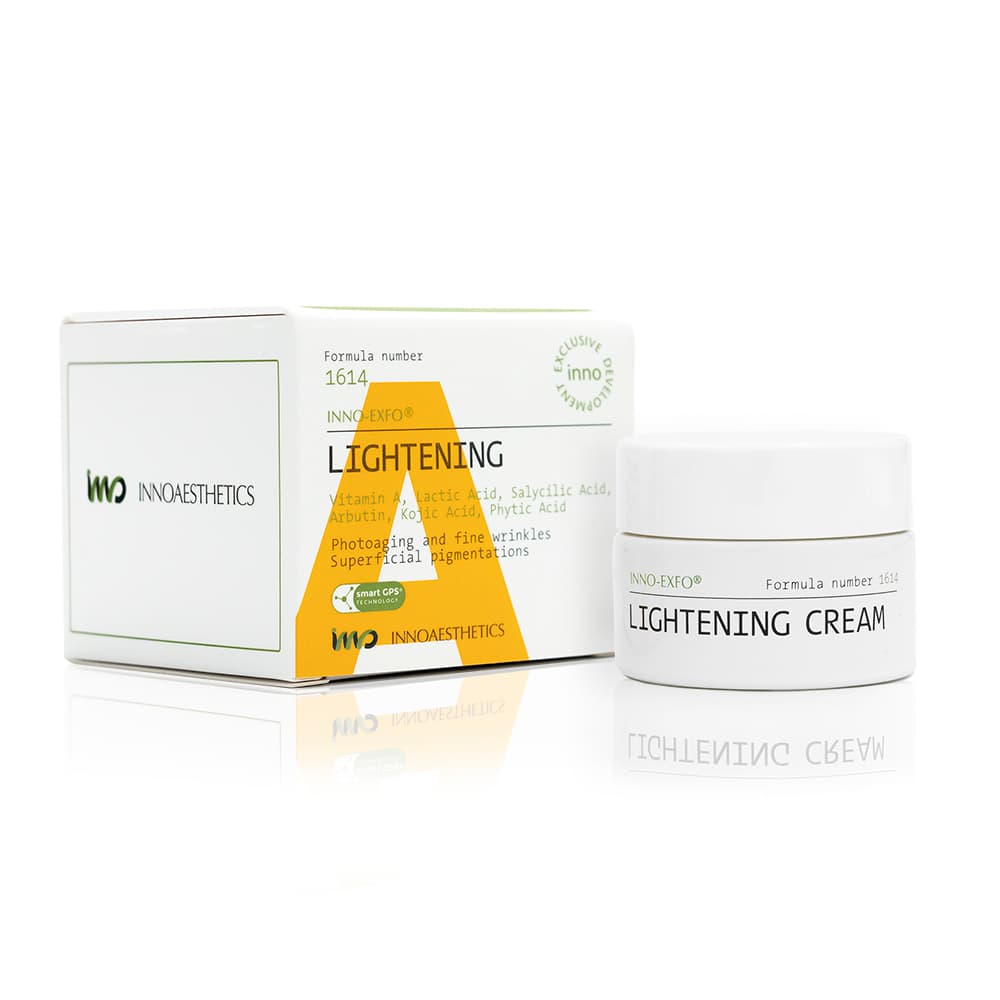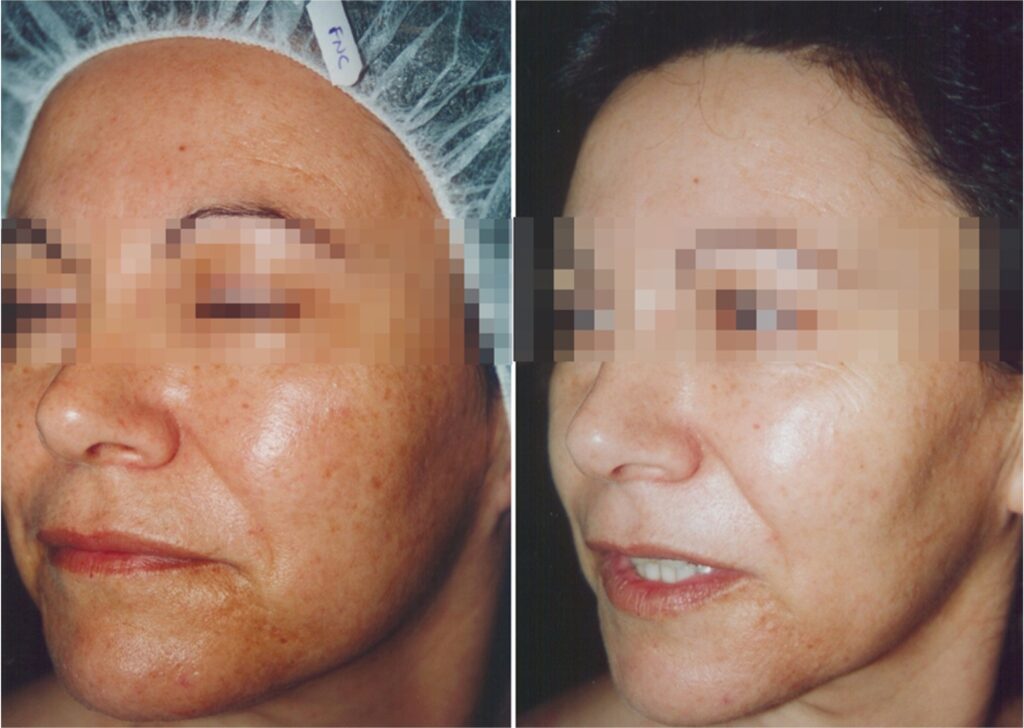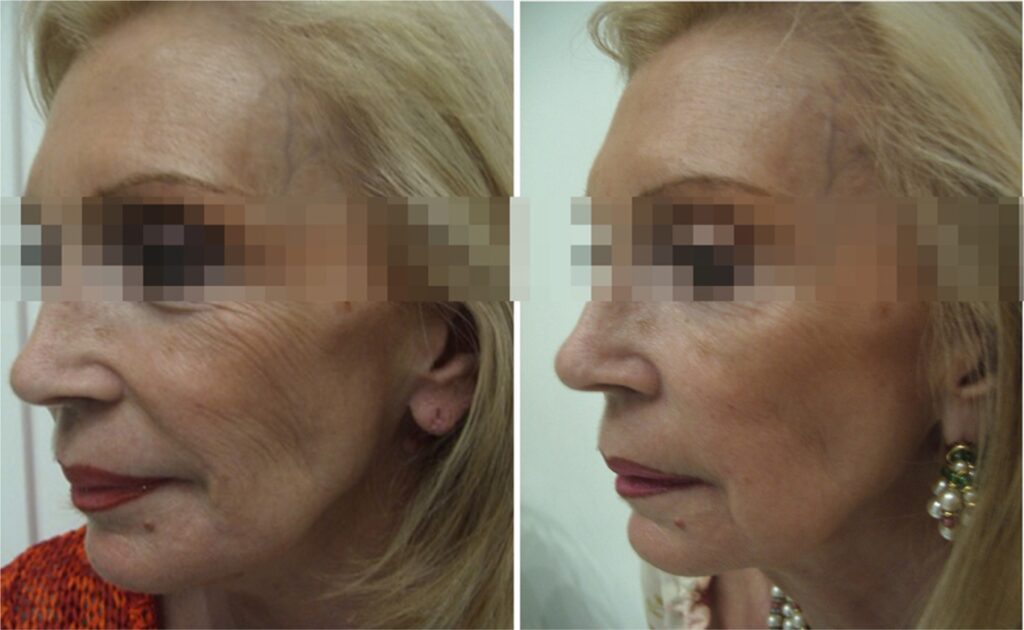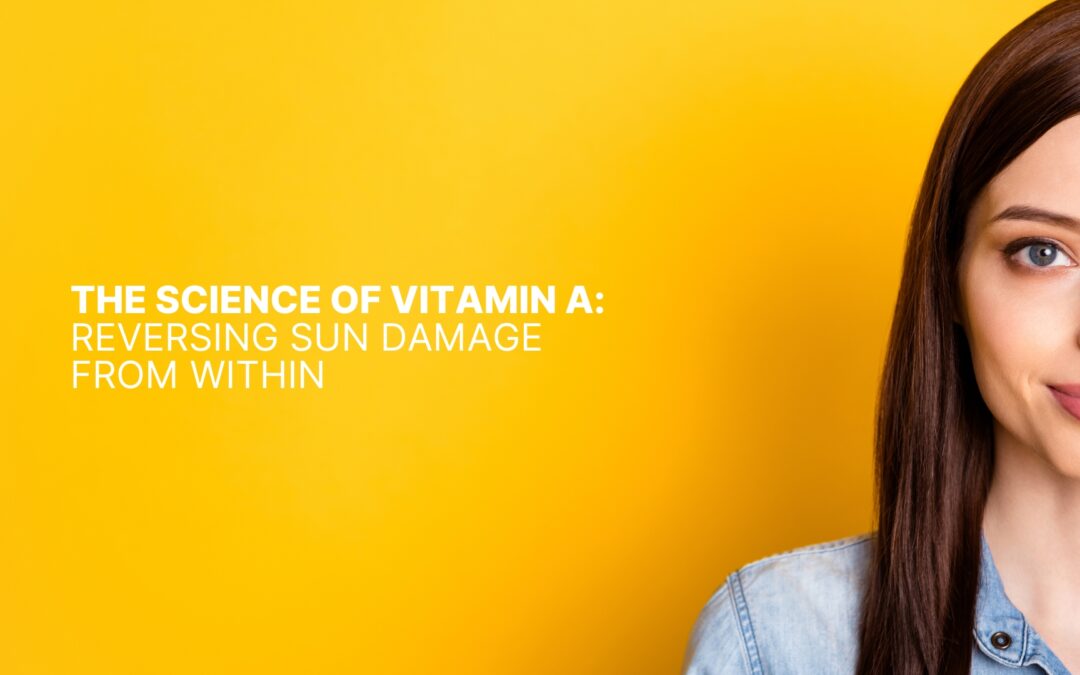Vitamin A peels—commonly known as yellow peels due to their distinct hue—are rapidly gaining popularity among aesthetic professionals for their powerful skin-enhancing effects. These treatments are known to improve overall skin quality, even out tone, and combat the visible signs of photoaging.
But what’s the science behind vitamin A? Who can benefit from it? How safe is it? This article answers these questions and more—but first, let’s take a closer look at how photoaging works.
THE MECHANISM OF SKIN PHOTOAGING
We are all familiar with skin aging: a natural, gradual decline in the production of structural proteins and antioxidants. As collagen and elastin levels decrease, the skin becomes less resilient and more prone to dryness, dullness, sagging, and wrinkles. This intrinsic process is referred to as chronological aging—an inevitable result of our internal biological clock. While we can’t stop it, we can certainly slow it down with consistent care.
Photoaging, however, is a more aggressive form of aging triggered by prolonged sun exposure. It exacerbates all the signs of chronological aging while adding its own layer of damage. The main culprit? Free radicals—unstable molecules generated by UV exposure. These molecules damage collagen and elastin fibers, impair cellular function, and compromise the skin’s protective barrier. At the same time, UV rays overstimulate melanocytes, leading to pigmentation disorders and uneven skin tone.
The signs of photoaging are easy to recognize:
- Deep wrinkles and folds.
- Loss of elasticity (elastosis).
- Uneven pigmentation.
- Dull, tired-looking skin.
- Prematurely aged appearance.
It is estimated that sun exposure accounts for nearly 90% of visible skin aging. While complete avoidance is not realistic or advisable—as sunlight plays a key role in vitamin D synthesis—exposure should be limited and always paired with appropriate photoprotection.
Learn more in our entry: Photoaging: How and why sun exposure accelerates the skin aging process.
HERE COMES VITAMIN A
Vitamin A is an essential nutrient, crucial for the proper functioning of the body. As a carotenoid, it is metabolized and converted into different active forms depending on the body’s needs. For the skin, it acts through retinoids, which interact with various cell types to stimulate renewal and repair.
Topical retinoids—such as retinol and retinoic acid—help to:
- Promote collagen and hyaluronic acid synthesis.
- Improve stem cell differentiation.
- Balance sebum production.
- Stimulate cell turnover.
- Regulate tyrosinase activity (for even skin tone).
- Control inflammation.
As we age, the body becomes less efficient at converting vitamin A into active retinoids and prioritizes systemic functions. This is why topical formulations become increasingly important to support skin regeneration. Retinoids are also fundamental in acne treatment for preventing breakouts and regulating oil production.
INNO-EXFO® LIGHTENING: A TRUSTED YELLOW PEEL

For those seeking deeper, more visible results, INNO-EXFO® Lightening—widely known as “The Yellow Peel”—offers a highly effective and well-tolerated solution. With over 15 years of clinical use, it features a synergistic blend of active ingredients:
Key Ingredients
- 3% Vitamin A (retinol).
- Lactic Acid – gentle exfoliation.
- Salicylic Acid – unclogs pores and treats acne.
- Kojic Acid – reduces pigmentation.
- Phytic Acid – antioxidant and brightening agent.
- Arbutin – natural skin brightener.
Main Benefits
- Refines skin texture.
- Brightens and evens skin tone.
- Fights acne and regulates sebum.
- Visibly reduces signs of photoaging.
- Enhances radiance and overall skin vitality.
WHO CAN BENEFIT FROM THE YELLOW PEEL?
INNO-EXFO® Lightening is suitable for most skin types and is especially effective for:
- Early signs of aging.
- Photoaged skin.
- Oily or acne-prone skin.
Its mild yet effective formulation makes it ideal for those seeking progressive results with minimal downtime.
WHO SHOULD AVOID IT?
Although well-tolerated, the peel is not recommended for:
- Pregnant or breastfeeding women.
- Individuals currently on isotretinoin or within 6 months of stopping.
- Those using topical corticosteroids or photosensitizing medications.
- Patients with active skin infections or lesions.
WHAT TO EXPECT DURING AND AFTER TREATMENT
- Application is quick, with a leave-on time of up to 2 hours depending on skin needs and tolerance.
- Protocol typically includes 3 sessions, spaced 21 days apart; 1–2 sessions may be sufficient in milder cases.
- No recovery time is needed, but strict sun protection is essential during the treatment course and for at least 1 month afterward.
- Peeling is mild or even unnoticeable, yet results are real and progressive—noticeable within 2–5 days after the first session.
- Skin appears smoother, brighter, more even-toned, and revitalized
PROVEN RESULTS
Shown below are two patients treated with 3 sessions of INNO-EXFO® Lightening, performed at 21-day intervals.


Observed improvements include:
- Visible reduction in pigmentation.
- More uniform texture and tone.
- Softer, clearer, more radiant skin.


